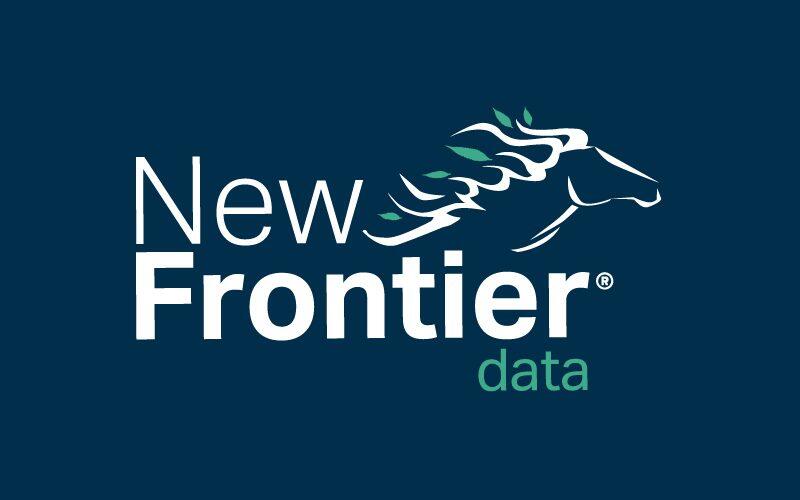17 Million Potential Cannabis Patients in Latin America

How Alleged WHO Recommendations Would Affect International Cannabis Markets
February 9, 2019
What’s the Latest on Legalization in New Jersey?
February 17, 2019Regional Stakeholders Meet at InterCannAlliance Symposium to Discuss the 9 Foundational Pillars of Emerging Global Medical Cannabis Market
By Giadha Aguirre de Carcer, CEO, New Frontier Data
The 9 Foundational Pillars
There are more than 60 nations worldwide seeking to decriminalize or legalize cannabis, mostly for medical applications. To date, New Frontier Data has observed, experienced, and studied 33 states in the U.S., and at least half a dozen nations’ new medical cannabis markets, from which we have drawn some important lessons.
There are 9 Foundational Pillars required for the effective establishment of a new legal cannabis market. When looking at the types of market differences seen in Canada versus Uruguay or the U.S., it is clear that populous- or government-driven Policy, as the case may be, ultimately drives how the given market will be set up. Depending on whether the impetus toward common goals stems from generating revenue, addressing a medical crisis, or curbing crime, the initial policy objectives are critical to shaping how that nation drafts regulation, weighs taxes, and crafts requirements for lab testing, cultivation, processing, and distribution.
Regulation defines the roadmap for execution and oversight, driving how to sequence and pace (by importance and priority), any subsequent foundational steps toward establishing a regulated cannabis market in support of said ultimate goal or policy — particularly Taxation. Whether looking to address a crime or medical problem, decisions will need to be made about the source of revenue in support of those efforts. For example, Uruguay, as a government-run national program, began by subsidizing the market, whereas markets like those in the U.S. run much more like free markets.
While we have only recently fully experienced how important Lab Testing is, (as seen by more than 75% of California’s pre-legalization flower having tested positive for fungus and pesticides), cannabis testing is indeed the only way to ensure product quality and medical efficacy. Depending on the national production target, the permitted product forms (i.e., flower versus extracts and edibles), and the tax structure, the costs, and breadth of lab testing may differ. . However, regardless of how they are implemented, testing and minimum quality standards are a key differentiator between legal and illicit markets.
Compliance and Information Analysis & Reporting remain nascent in the U.S. and are nonexistent in many new markets across Latin America and even Europe. In most cases, they mark where government intervention ends, yet they ought to be given more importance. Without these underestimated foundational pillars, efforts in establishing policy, regulations, taxation, and lab-testing requirements become lost, as does the government’s ability to measure the industry’s performance relative to set targets. Compliance and reporting should be at the at the core of any national cannabis policy, without which the specific socio-economic, legal and public health impact can neither be measured nor achieved.
Last but not least, standard operating procedures regarding Cultivation, Processing (or extraction) and Distribution & Patient Education, are keys to effective operation of the market once established. Fortunately, nations like Canada and Australia (and to some degree several U.S. states), have paved the way to understanding how best to manage and set up such vital operational infrastructures. That said, national differences should be expected depending on climate, land mass, and whether produced cannabis is intended for adult versus medicinal use, or export trade versus domestic consumption.
Ignoring, or not spending sufficient time thinking through the why-and-how of these 9 Foundational Pillars can not only slow down the development or maturation of a legal cannabis market but can also ultimately lead to unwanted results, defeating the very purposes of legalization in the first place.
The InterCannAlliance (ICA)
While observing and studying the evolution of dozens of new markets around the world, New Frontier Data — along with eight global firms respected and trusted to have successfully led the establishment of each of the 9 Foundational Pillars across various new cannabis markets — came to Panama to jointly share the good, the bad, and the ugly of their respective experiences. The ICA was born in an effort to advance the conversation around the global cannabis market, sharing unbiased and vetted information to educate those now participating in this global phenomenon, starting with Latin America.
On Feb. 11, 2019, the ICA held its inaugural symposium (in collaboration with CannaTech), bringing together top government officials from Panama, Colombia, Mexico, Paraguay, Chile, Argentina, and others to explore the impact and opportunities created by the regional legalization of cannabis. With nearly 17 million potential medical cannabis patients, Latin American nations are beyond asking why they should legalize, and are now struggling to understand how best to do so.
Thus, experts from each ICA Member – VicenteSederberg, Hoban Law Group, Steep Hill Labs, Simplifya, New Frontier Data, TheraCann, Mountain Medicine, and Lift – spent the day discussing socioeconomic implications and lessons learned pertaining to what is expected to shape up in Latin America as regions, not only nations any more, enter the global cannabis race.
The ICA is scheduled to meet again in Europe and Africa early this year, to present national leaders with such regional socio-economic studies such as The Latin America Regional Cannabis Report: 2019 Industry Outlook released by New Frontier Data at the ICA in Panama. The ultimate goal and likely challenge will be to identify regional patterns and continue fostering open communication and fact-based discussion as regional cannabis dynamics emerge simultaneously worldwide.
The Emergence of Regional Cannabis Markets: Latin America
As detailed in New Frontier Data’s latest report, many countries across the region are opening access to medical cannabis through highly regulated industries. Recognizing the significant potential opportunities presented by a regulated industry, cannabis businesses within and outside the region are aggressively pursuing import and export opportunities in Latin America to service a $9.8 billion USD market.
For the time being, said Marcela Huertas, founder, and CEO of Colombia-based Green Center Capital, “the main obstacle for the medical and recreational cannabis business to develop globally is the lack of financial infrastructure at the domestic and international levels. Therefore, our main goal… is to design financial instruments to attract foreign investors, into the Colombian cannabis market, that have the capacity to do transactions in markets where the legalization of cannabis has covered the full spectrum of services.”
Colombia is positioning itself to be a major global exporter of medical cannabis derivatives. With its inexpensive cultivation costs, ideal growing conditions, and experienced cultivators, Colombia is expected to produce cannabis at a fraction of the cost of exporters like Canada. The country uses a contract grower model, where large companies contract with local cultivators to leverage the experience and resources of large companies while benefiting small- and medium-sized farms. Cultivators – even unlicensed ones – are looking to ascertain best practices used in mature markets. They are interested in techniques, extraction processes, GMP standards, and market entry requirements.
Panama’s relationship with cannabis is in flux: Cannabis use and possession, for now, remain illegal, even for zero-THC CBD products. While the government does permit exceptional cases of CBD use with a “sanitary permit” from the Ministry of Health, they are not common. The path for cannabis reform has been laid; the National Assembly is currently reviewing a bill which would legalize medical cannabis. Meanwhile, politics rival regulatory issues. In general, popular sentiment towards cannabis by the citizens may not necessarily translate into political reform unless the political policy makers see an economic value associated with the reform. The transition away from cartels may take longer as well.
Reported cannabis usage rates in Latin America are very low, due to heavy enforcement and criminalization of cannabis. Since people are much less likely to report their usage, there is a higher reporting error in the region. Thus, despite low usage rates in global surveys, there is a thriving cannabis market in Latin America.
Ultimately, the key for the regional industry will be in developing optimal efficiency for energy use and production: Latin America will feature lower-cost production than other regions, but will compete against neighboring countries for a foothold. As a potential key cannabis export market, Latin America will require a competitive edge through continued high standards of cultivation and increased efficiencies in production and operations.




